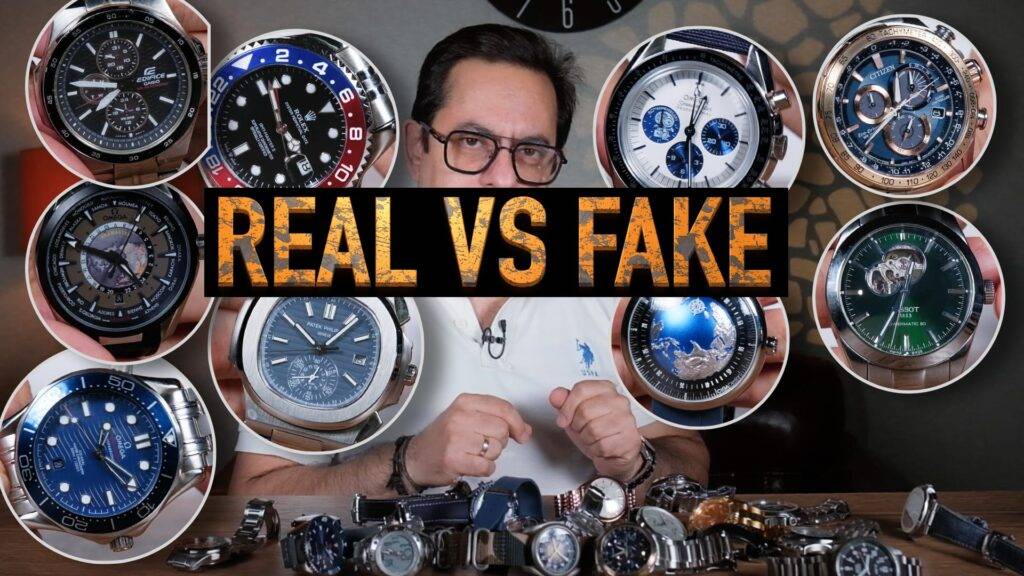When it comes to luxury timepieces, the market is flooded with two primary options: original watches and first copy (replica) watches. While original watches are crafted with precision, premium materials, and brand heritage, first copies are built to mimic these designs at a fraction of the price.
An original watch is manufactured and sold by an authorized brand like Omega, Citizen, or Rado, and undergoes rigorous quality control. These watches often come with a certificate of authenticity, a warranty, and a legacy of craftsmanship.
In contrast, a first copy watch is an imitation, visually similar to the original but built using cheaper materials and generic movements. Though visually convincing, the internal components usually fail to match the performance, durability, and reliability of a genuine timepiece.
Table of contents
- Why Do People Buy Replica or First Copy Watches?
- The Value Proposition of Original Watches
- The Performance Gap: First Copy vs. Original Watches
- Are All First Copy Watches Unreliable?
- Replica Watch Buyers: A Profile
- First Copy Mechanical Watches: Worth the Risk?
- How to Check a Replica Watch’s Quality Before Purchase
- Security Concerns: Stolen Replicas vs. Stolen Originals
- Final Verdict: Which One Should You Choose?
Why Do People Buy Replica or First Copy Watches?
There are two major reasons why consumers opt for first copy watches:
- Visual Appeal at Low Cost: Many replicas are virtually indistinguishable from originals at a glance. With sharp design clones and similar dials, straps, and cases, they provide an illusion of luxury for under ₹7,000.
- Risk Affordability: Unlike original watches which can cost lakhs, a replica watch is a low-investment experiment. Buyers are often willing to take the risk for the style, knowing that even if the watch fails after a few months, the financial loss is minimal.
The Value Proposition of Original Watches
Original luxury watches are more than just accessories—they’re investments. High-end timepieces from brands like Rolex, Omega, or TAG Heuer retain or even appreciate in value over time. Because of brand reputation and limited editions, these watches are often resold at premium prices.
Moreover, originals are built to last. Crafted from high-grade stainless steel, sapphire crystal glass, and high-precision automatic or quartz movements, they provide:
- Longevity: Many last decades with proper maintenance.
- Accuracy: Certified chronometers have tight tolerances for timekeeping.
- Repairability: Spare parts and servicing are readily available.
- Durability: Resistance to drops, water, and harsh environments.
The Performance Gap: First Copy vs. Original Watches
While first copy watches may look like their luxury counterparts, performance is where they fall short. The movements used are often low-grade, resulting in:
- Inconsistent timekeeping
- Delicate gears prone to wear and tear
- Short battery or spring life
- Lack of water resistance
Even minor shocks like a fall from a table may render a replica watch non-functional. Conversely, an original watch is engineered to endure everyday use, accidental bumps, and time.
Are All First Copy Watches Unreliable?
Not all replica watches perform poorly. Some high-quality replicas use Japanese or Chinese automatic movements which provide decent accuracy and longevity, especially if maintained well.
However, these watches still don’t meet the standards of authentic ones in terms of finishing, mechanical precision, and overall endurance.
The common issues faced with replicas include:
- Fragile crown mechanisms
- Loose internal components after impact
- Non-aligned or faulty 24-hour sub-dials
- Gear shifts or misaligned hands
Replica Watch Buyers: A Profile
Replica watches appeal mostly to:
- Young professionals who desire the look of luxury
- Collectors experimenting before committing to originals
- Fashion-forward individuals who frequently change watches to match outfits
- People who travel or work in risky environments and don’t want to wear expensive timepieces daily
For these users, a ₹2,000–₹7,000 watch that mimics a ₹2 lakh original is considered a fair trade-off.

First Copy Mechanical Watches: Worth the Risk?
Many replica mechanical watches now come with automatic movements, offering the feel of traditional horology. While some of these perform well and offer decent accuracy (+/- 45 seconds per day), the lack of servicing support and fragile components remain concerns.
If maintained carefully, and wound gently, a decent replica can last 6 months to 2 years. However, this is no match for the decades-long durability of an original.
How to Check a Replica Watch’s Quality Before Purchase
If you’re considering a first copy watch, inspect the following:
- Time Drift in 24 hours: Should not exceed 1-2 minutes
- Weight: A good replica should not feel too light
- Crown and Gear Smoothness: Resistance should be consistent
- 24-hour Sub-Dial Accuracy: Check rotation and alignment
- Visual Details: Sharp logo printing, aligned indices, and polished case edges
If it passes these checks, it might be a decent short-term investment.
Security Concerns: Stolen Replicas vs. Stolen Originals
One unique advantage of replica watches is psychological—less financial loss if stolen. Thieves may assume it’s a valuable timepiece, but you lose a fraction of what you’d lose with an original.
However, this also makes replicas a legal gray area, especially if they are marketed or sold as originals. Buying from reputable sources is always recommended.
Final Verdict: Which One Should You Choose?
If you’re looking for performance, legacy, and investment value, choose original watches. Their cost is justified by quality, durability, and brand equity.
But if your goal is aesthetic appeal at an affordable price, and you’re willing to compromise on durability and accuracy, then first copy watches—especially well-made mechanical ones—can serve you well in the short term.
Just remember: a replica will never hold the soul of horological craftsmanship, but it might win you style points temporarily.
